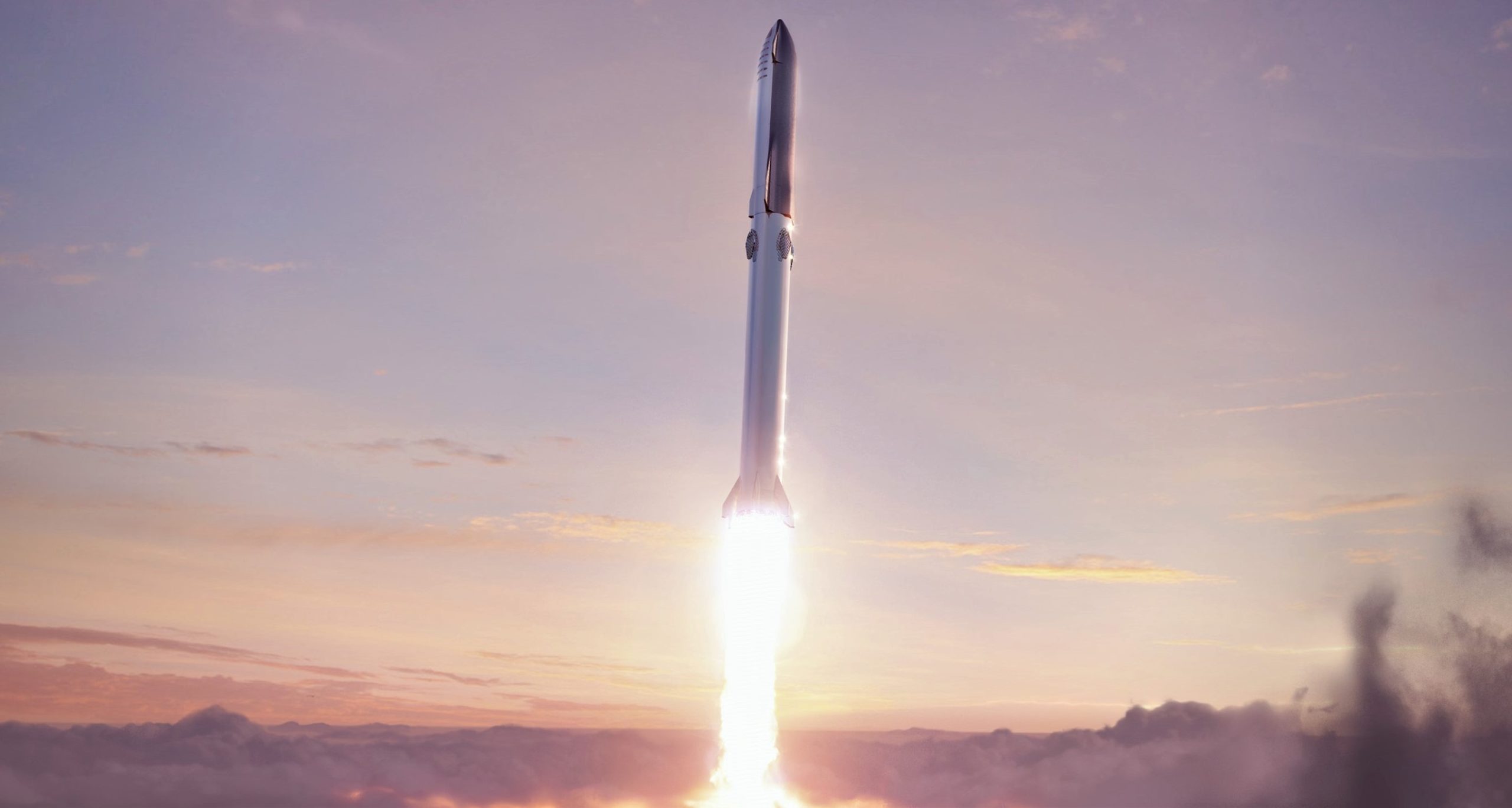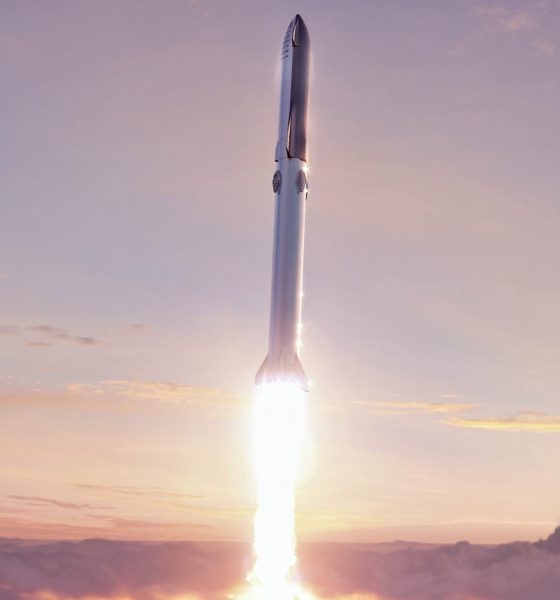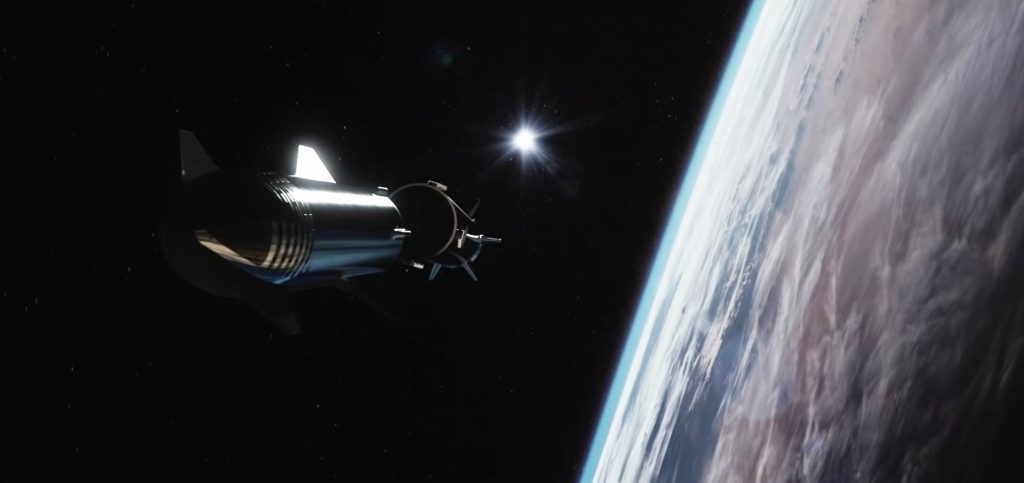

News
SpaceX CEO Elon Musk confirms Q3 2021 target for first orbital Starship launch
Update: On the heels of a NASASpaceflight report, CEO Elon Musk has confirmed that SpaceX has an internal target of Q3 2021 (possibly as early as July!) for Starship’s first orbital launch attempt.
NASASpaceflight reports that SpaceX wants to begin orbital Starship launch attempts as early as July 1st, 2021, less than four months from now.
In no uncertain terms, this is an internal target, meaning that it’s far likelier than not that SpaceX’s first orbital Starship launch attempt wont happen in July. Nevertheless, the target’s existence implies that SpaceX sees a real, viable path – however narrow – to launching Starship into orbit for the first time just four months from now.
Put a different way, SpaceX believes it has six months of margin to get through preliminary Super Heavy booster testing (possibly including one or several hops), qualify an upgraded Starship design (SN15 onwards), roughly complete an orbital launch complex, and deliver around two-dozen orbit-capable Raptor engines before the end of the year. While unclear, it’s also possible that the milestone would require SpaceX to qualify and ship the first flightworthy Raptor Vacuum engines – another major challenge.
On its own, completing any one of those major feats of engineering would be impressive. Completing all of them simultaneously – even if the effort suffers more than five months of delays – would be nothing short of extraordinary. As such, it’s fair to assume that SpaceX will fall well short of its incredibly ambitious development schedule, even if the company almost invariably does what it sets out to do.
In this case, that means that there is a very real chance that Starship reaches orbit before the end of 2021, achieving a target that both SpaceX CEO Elon Musk and COO/President Gwynne Shotwell have reiterated within the last several months.

Even after reaching orbit for the first time, SpaceX will likely continue Starship development largely unchanged, treating the orbital regime as just another sandbox to test and refine Starship prototypes with. Given all the extraordinary problems SpaceX will need to solve to reach orbit, there’s also a decent chance that Starship or Super Heavy’s first orbital launch attempt will fail. If the launch is initially successfully, it’s just as likely that Super Heavy will fail its first hypersonic launch and landing attempt.
If Starship itself reaches orbit in one piece, any number of issues could kill the vehicle in space. If it survives long enough complete a 90-minute orbit and line up for reentry, descent, and landing, Starship’s first orbital-velocity atmospheric reentry – one of the biggest challenges in aerospace engineering – could easily destroy the spacecraft. If Starship somehow makes it through reentry on its first try, the stresses of orbital spaceflight and that reentry could prevent its Raptor engines from performing nominally during its powered flip maneuver and landing burn.
This is all to say that even as SpaceX sets its sights on orbital flight, the trajectory is still a continuation of an ongoing test program and iterative development process. While orbit-capable Starships will likely be much more expensive than their suborbital brethren, the differences are small enough that SpaceX will undoubtedly continue to push the envelope and risk losing prototypes to uncover and fix bugs and design flaws as early as possible.
Along the way, there will undoubtedly be more SN8/SN9/SN10-style hiccups. Given Starship’s developmental history, however, it’s starting to look like nothing less than catastrophe will prevent SpaceX from launching Starship into orbit before the year is out.

News
Tesla FSD fleet is nearing 7 billion total miles, including 2.5 billion city miles
As can be seen on Tesla’s official FSD webpage, vehicles equipped with the system have now navigated over 6.99 billion miles.

Tesla’s Full Self-Driving (Supervised) fleet is closing in on almost 7 billion total miles driven, as per data posted by the company on its official FSD webpage.
These figures hint at the massive scale of data fueling Tesla’s rapid FSD improvements, which have been quite notable as of late.
FSD mileage milestones
As can be seen on Tesla’s official FSD webpage, vehicles equipped with the system have now navigated over 6.99 billion miles. Tesla owner and avid FSD tester Whole Mars Catalog also shared a screenshot indicating that from the nearly 7 billion miles traveled by the FSD fleet, more than 2.5 billion miles were driven inside cities.
City miles are particularly valuable for complex urban scenarios like unprotected turns, pedestrian interactions, and traffic lights. This is also the difference-maker for FSD, as only complex solutions, such as Waymo’s self-driving taxis, operate similarly on inner-city streets. And even then, incidents such as the San Francisco blackouts have proven challenging for sensor-rich vehicles like Waymos.
Tesla’s data edge
Tesla has a number of advantages in the autonomous vehicle sector, one of which is the size of its fleet and the number of vehicles training FSD on real-world roads. Tesla’s nearly 7 billion FSD miles then allow the company to roll out updates that make its vehicles behave like they are being driven by experienced drivers, even if they are operating on their own.
So notable are Tesla’s improvements to FSD that NVIDIA Director of Robotics Jim Fan, after experiencing FSD v14, noted that the system is the first AI that passes what he described as a “Physical Turing Test.”
“Despite knowing exactly how robot learning works, I still find it magical watching the steering wheel turn by itself. First it feels surreal, next it becomes routine. Then, like the smartphone, taking it away actively hurts. This is how humanity gets rewired and glued to god-like technologies,” Fan wrote in a post on X.
News
Tesla starts showing how FSD will change lives in Europe
Local officials tested the system on narrow country roads and were impressed by FSD’s smooth, human-like driving, with some calling the service a game-changer for everyday life in areas that are far from urban centers.

Tesla has launched Europe’s first public shuttle service using Full Self-Driving (Supervised) in the rural Eifelkreis Bitburg-Prüm region of Germany, demonstrating how the technology can restore independence and mobility for people who struggle with limited transport options.
Local officials tested the system on narrow country roads and were impressed by FSD’s smooth, human-like driving, with some calling the service a game-changer for everyday life in areas that are far from urban centers.
Officials see real impact on rural residents
Arzfeld Mayor Johannes Kuhl and District Administrator Andreas Kruppert personally tested the Tesla shuttle service. This allowed them to see just how well FSD navigated winding lanes and rural roads confidently. Kruppert said, “Autonomous driving sounds like science fiction to many, but we simply see here that it works totally well in rural regions too.” Kuhl, for his part, also noted that FSD “feels like a very experienced driver.”
The pilot complements the area’s “Citizen Bus” program, which provides on-demand rides for elderly residents who can no longer drive themselves. Tesla Europe shared a video of a demonstration of the service, highlighting how FSD gives people their freedom back, even in places where public transport is not as prevalent.
What the Ministry for Economic Affairs and Transport says
Rhineland-Palatinate’s Minister Daniela Schmitt supported the project, praising the collaboration that made this “first of its kind in Europe” possible. As per the ministry, the rural rollout for the service shows FSD’s potential beyond major cities, and it delivers tangible benefits like grocery runs, doctor visits, and social connections for isolated residents.
“Reliable and flexible mobility is especially vital in rural areas. With the launch of a shuttle service using self-driving vehicles (FSD supervised) by Tesla in the Eifelkreis Bitburg-Prüm, an innovative pilot project is now getting underway that complements local community bus services. It is the first project of its kind in Europe.
“The result is a real gain for rural mobility: greater accessibility, more flexibility and tangible benefits for everyday life. A strong signal for innovation, cooperation and future-oriented mobility beyond urban centers,” the ministry wrote in a LinkedIn post.
News
Tesla China quietly posts Robotaxi-related job listing
Tesla China is currently seeking a Low Voltage Electrical Engineer to work on circuit board design for the company’s autonomous vehicles.

Tesla has posted a new job listing in Shanghai explicitly tied to its Robotaxi program, fueling speculation that the company is preparing to launch its dedicated autonomous ride-hailing service in China.
As noted in the listing, Tesla China is currently seeking a Low Voltage Electrical Engineer to work on circuit board design for the company’s autonomous vehicles.
Robotaxi-specific role
The listing, which was shared on social media platform X by industry watcher @tslaming, suggested that Tesla China is looking to fill the role urgently. The job listing itself specifically mentions that the person hired for the role will be working on the Low Voltage Hardware team, which would design the circuit boards that would serve as the nervous system of the Robotaxi.
Key tasks for the role, as indicated in the job listing, include collaboration with PCB layout, firmware, mechanical, program management, and validation teams, among other responsibilities. The role is based in Shanghai.
China Robotaxi launch
China represents a massive potential market for robotaxis, with its dense urban centers and supportive policies in select cities. Tesla has limited permission to roll out FSD in the country, though despite this, its vehicles have been hailed as among the best in the market when it comes to autonomous features. So far, at least, it appears that China supports Tesla’s FSD and Robotaxi rollout.
This was hinted at in November, when Tesla brought the Cybercab to the 8th China International Import Expo (CIIE) in Shanghai, marking the first time that the autonomous two-seater was brought to the Asia-Pacific region. The vehicle, despite not having a release date in China, received a significant amount of interest among the event’s attendees.








